
There are many ways to cook salmon -- you can poach it, sauté it or bake it. But, you can also cook salmon simply by marinating it in vinegar and citrus juices. This method of preparation originates from Latin America and is known as ceviche, cebiche or seviche. It’s a simple way to enjoy fresh salmon or other seafood.
The Science of Ceviche
When you cook raw fish, heat kills off bacteria to make it safe to eat. When you prepare raw fish in the style of ceviche, the acid subtly “cooks” the fish, setting the exterior of the fish and rendering the flesh opaque, though much more tender than traditional seafood preparations. While vinegar does indeed cook salmon, fish cooked in this fashion has a higher risk of containing food-borne pathogens. People with certain illnesses or health conditions and pregnant woman should refrain from eating raw fish or fish cooked in the ceviche fashion.
The Right Salmon for Ceviche
Use salmon that’s sushi grade or as fresh as possible so that bacteria hasn’t had time to significantly proliferate. Buy salmon that smells fresh and has firm flesh, or that has been frozen immediately after being caught. If you purchase frozen salmon, let it thaw under cool, running water or briefly in the refrigerator just until thawed.
Prepping for Ceviche
Cut your salmon into small, half-inch cubes or thin slices. Combine enough vinegar to coat your fish with any other spices you’d like. White wine and rice vinegars are great choices for ceviche. Using only vinegar can result in a sharp, caustic taste for your final dish. It’s best to combine the vinegar with citrus juice for a more well rounded flavor profile. You can use salt, pepper, garlic, fresh herbs, or just about any seasoning with which you’d like to flavor your salmon. Vegetable lovers can also dice onions, peppers or cucumbers to toss with your fish and marinade.
Cooking the Salmon
Once your fish and marinade are prepared, toss together in a bowl and place in the refrigerator. For “rare” salmon, you can let the mixture sit for only 15 minutes before eating. For a more “medium” preparation, let the mixture sit for an hour or up to three hours. If your cubes or slices are on the thick side, add additional time to allow the vinegar to penetrate the flesh of the salmon. Ceviche can be enjoyed on its own, with fresh greens or spread across crackers or bread.
Related Articles

How to Cook Raw Tuna in Lemon

How to Cook Eelpout

How to Pan-Sear Swordfish
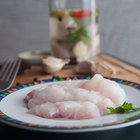
How to Pickle Fish

Basic Fish Marinades

How to Brine Fish Before Cooking It
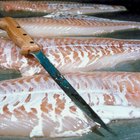
How to Grill a Cod Fish

How to Cook Silver Fish Filipino Style
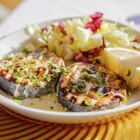
How to Grill and Smoke Swordfish
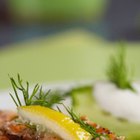
How to Marinate Salmon Fillets

How to Cook Jamaican Jerk Salmon
How to Cook Salmon to Moist & Tender ...
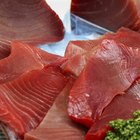
How to Cook Yellowfin Tuna on a George ...

How Long Does Tilapia Last Refrigerated?
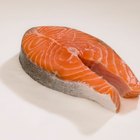
How to BBQ Salmon Fillets

How to Cook Ono Fish

How to Cook Bluefish

How to Cook Venison Backstrap Steaks on ...

How to Steam Lobster & Shrimp

Salmon Dinner Menu
References
- Food 52: All About Ceviche
- Food & Drug Administration: Cooking for People at Risk
- The Food Lover's Companion; Sharon Tyler Herbst and Ron Herbst
Resources
Writer Bio
Maya Silver is an editor at DiningOut Magazines. She is the author of "My Parent Has Cancer And It Really Sucks" and has written for "U.S. News & World Report," the "Washington Post Express" and local newspapers and magazines. She has helped hundreds of homes make energy improvements. Her culinary knowledge stems from professional and personal cooking experience.
Photo Credits
Jupiterimages/Stockbyte/Getty Images